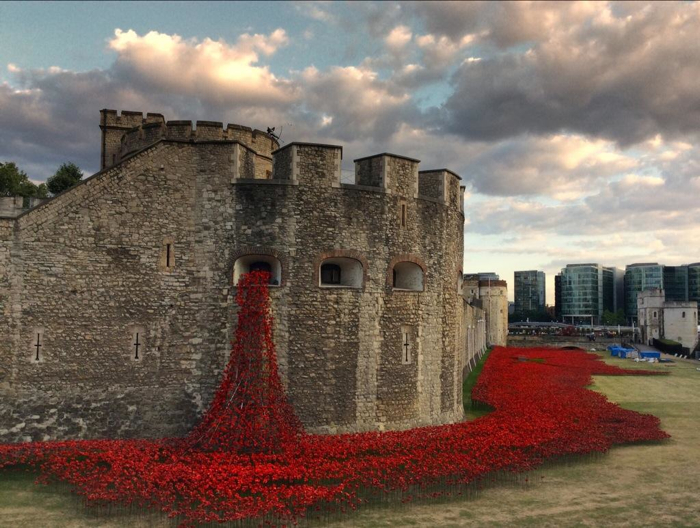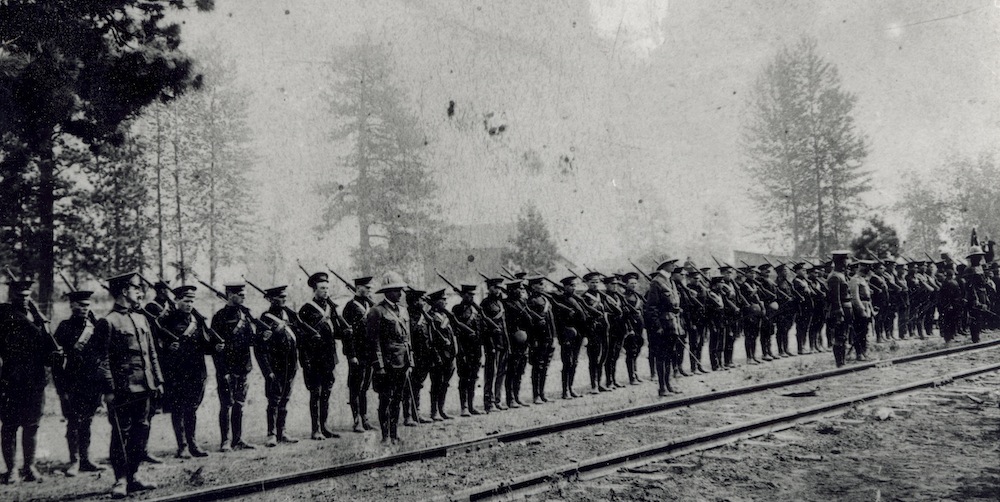
On November 11, 1918, the guns of World War I fell silent on the Western Front. The end of the Great War was, so many participants swore, surely the end of all wars. It was, of course, hubris; less than a generation later most of the world launched itself into World War II. But November 11 has become the day, in much of the world, to remember. In these pages you’ll find some Facts and Opinions about a day known by many names. Whether Remembrance Day, Veteran’s Day, Armistice Day, or Independence Day, it’s a day to pay homage to those who fought and died and suffered in warfare.
‘JACK’ and ELEANOR NASH: Hastily wed, quickly separated in 1914.

By Michael Sasges
In the spring I “knew” fewer small stories about the Great War than big stories. Barbara Tuchman’s Guns of August was probably the biggest because the first I knew; Margaret MacMillan’s Paris 1919, probably the best remembered because the latest I read. The deaths, in 1917 in France, of two men from “my” street was probably the smallest, and only, Great War story I knew. In the fall, at this Canadian Remembrance Day, I now know that the cenotaph which memorializes Alexander Hogg and David Hogg is short at least one name, Tommy Charters, and the “roll of honour” hanging in one of the local churches is short many names. I also know the man whose name tops one of the cenotaph’s faces was a middle-aged bachelor who got married on his way to the Great War. … read more
Why I prefer to remember Remembrance Day
By Tom Regan
We don’t have much of a tradition of military service in my family, but what we do have is meaningful. One of my uncles fought in the Second World War for Canada and saw some pretty serious action. My father-in-law, an American, was a lifetime aviator, and flew for the US Air Force in World War II, Korea, and Vietnam. So I’ve always considered November 11th an important day to observe. But when it comes to whether I celebrate Canada’s Remembrance Day, or America’s Veterans Day, I almost always prefer the former over the latter. The reason may be a semantic one but it’s an important one. … read more
A philosopher asks: what do we owe the dead?
By Janna Thompson
Remembrance Day is an occasion when people are supposed to remember and honour those who died in their nation’s wars. But why should we believe that this obligation exists? The dead are dead. They can’t be gratified by our remembrance or insulted by a failure to honour them. Those facts do not prevent us from thinking that we have duties to the dead. Most of us believe we ought to remember people who made sacrifices for our sake. Most of us believe we ought to keep promises made to the dead, to protect their reputations from malicious lies and to fulfil their bequests. … read more
Body counts disguise true horror of what wars do to bodies.
By Tom Gregory
Every year on Remembrance Day, we pause to look back on old wars and recount the tallies of the dead, including 16 million killed in the first world war and 60 million in the second world war. And every day, news reports use body counts to highlight the human costs of war: from Syria, where the United Nations has estimated more than 191,000 people have been killed up to April this year, to Ukraine, where the latest estimates are of at least 3,724 people killed (including 298 on Flight MH17). But simply counting the bodies of those killed in war may not actually help us understand the death and destruction caused by war. Instead, my worry is that they end up erasing the violence inflicted on each of the bodies of those affected by war, and numbing our emotional responses to the deaths of others. … … read more

Images from Canada’s Remembrance Day, 2014
By Greg Locke and Deborah Jones

In case you missed these:
World and War
By Deborah Jones
Every person who fought in World War I is now dead – and yet no one alive today is unaffected. The war consumed much of the globe for, arguably, decades. Many contend that the unresolved conflicts of the “Great War” re-ignited to become the conflagration we call World War II, then set in motion events from the Cold War to today’s Middle Eastern conflicts. A century after it began, I am most astonished at the hubris.
Far from Flanders Fields
By Deborah Jones
It’s at Ypres that my imagination falters, along with my tenuous grasp of poet John McCrae’s identity, and interest in the tiresome debate over the merits and meanings of his poem In Flanders Fields. It’s because of Ypres I am unable to imagine a man with the sensitivity of a poet and the intelligence of a physician harbouring “romantic” notions of war in the conditions of 1915 trench warfare.

The Decline in Global Violence
By Andrew Mack
Has the long-term threat of violence — war, terrorism, and homicide — been decreasing or increasing worldwide? For some, the answer seems clear. Many in the strategic community concur with General Martin Dempsey, Chairman of the United States Joint Chiefs of Staff, who has said today’s world is “more dangerous than it has ever been.” But there is little evidence to support them. During 2012, the number of conflicts being waged around the world dropped sharply, from 37 to 32. High – intensity conflicts have declined by more than half since the end of the Cold War, while terrorism, military coup and genocide numbers are also down. And this is not a recent phenomenon. According to Harvard University’s Steven Pinker, violence of all kinds has been declining for thousands of years; he has argued “we may be living in the most peaceful era in our species’ existence.” In the 2013 Human Security Report The Decline in Global Violence: Evidence Explanation and Contestation — excerpted here — global security specialist Andrew Mack analyses the evidence.

If you appreciate our work, please help sustain us. Facts and Opinions is a boutique for slow journalism, without borders. Independent, non-partisan and employee-owned, F&O is supported entirely by readers: we do not carry advertising or solicit donations from foundations or causes. Why? We appreciate your interest and support: for $2.95 (the price of a cheap brew) you can subscribe to F&O for a month. If that breaks your budget, a one-day pass is $1. A subscription is required for most F&O original work. Subscribe for free to Frontlines by entering your address in the form on the right (we won’t share your address), or follow us on Facebook or Twitter.

